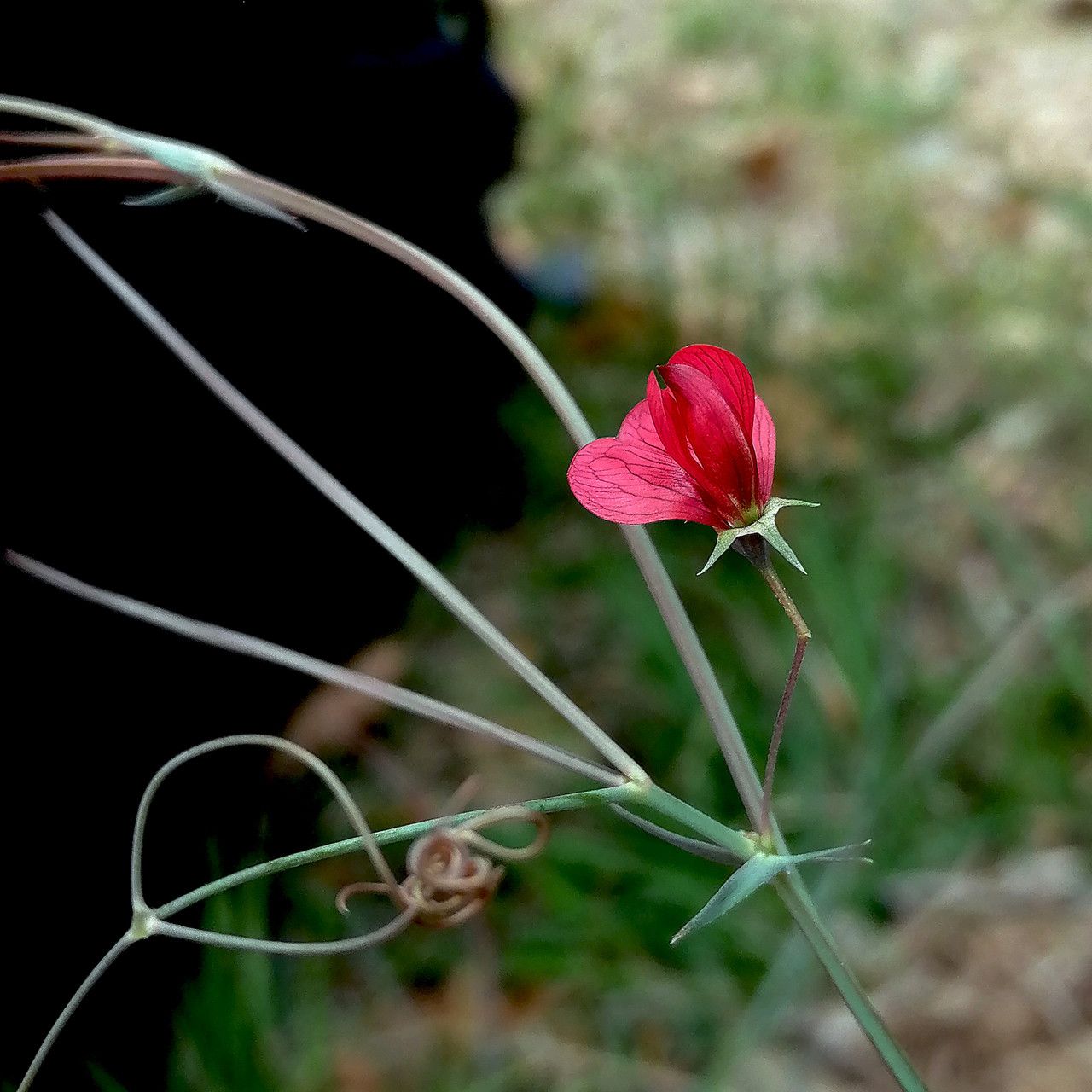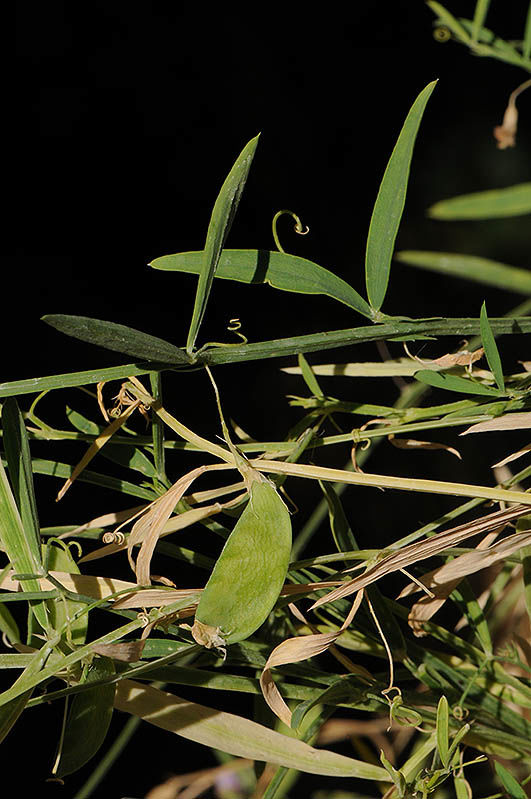Leather Vetch
lathyrus setifolius
Also known as: ["Leather Pea","Slender-leaved Pea"]
Overview
A slender-stemmed, herbaceous vine with small, pea-like flowers and narrow leaves.
Benefits & Perks
["wildlife attractant (bees, butterflies, birds)","drought tolerant","shade tolerant"]
Botanical Classification
| Phylum: | Magnoliophyta |
| Class: | Magnoliopsida |
| Order: | Fabales |
| Family: | Fabaceae |
| Genus: | Lathyrus |
| Botanical Name: | Lathyrus setifolius |
Plant Characteristics
Basic Information
- Category: Flowers
- Suitable Location: garden bed or container in a location with good air circulation
- Suitable For:
- Is Weed: No
- Allergenicity: low
Environmental Needs
- Climate: {"temperatureRange":"5–30°C"}
- Hardiness: {"zones":"7–10"}
- Misting: rarely required, only if ambient humidity is very low
- Drainage: Fast-draining to prevent waterlogging.
- Soil Type: Well-draining loamy soil with added organic matter.
Maintenance Level
- Maintenance Level: moderate
- Toughness Level: moderate
- Pruning Frequency: As needed, typically after flowering or in early spring.
- Pruning Intensity: Moderate; remove up to one-third of old growth if necessary.
Care Details
Ideal Sunlight Coverage:
Full sun (6–8 hours/day); tolerates partial shade in hot climates.
Sunlight Tolerance Tips:
Acclimate gradually if moving from shade to sun; protect from intense midday sun in hot regions; ensure good air circulation to prevent mildew.
Care Requirements
Care Difficulty
easymoderate
Sunlight
full sun to partial shade
Morning sun is ideal; avoid harsh afternoon sun in summer; rotate plant for even growth.
Watering
every 7–10 days during active growth, reduce in winter
Water thoroughly but infrequently; ensure good drainage; avoid wetting foliage to prevent fungal issues.
Soil
well-draining, loamy soil with moderate organic content
pH: Slightly acidic to neutral (pH 6.0–7.0).
Ensure good drainage; amend with organic matter; avoid heavy clay soils.
Temperature
Prefers cool to moderate temperatures (60–75°F/15–24°C); can tolerate cooler nights.
Avoid drafts; maintain consistent temperatures; protect from extreme heat/cold.
Fertilizing
every 4–6 weeks during growing season
Fertilize less in winter; apply to moist soil to prevent root burn; flush soil occasionally to prevent salt buildup.
Propagation
Methods
Seed or stem cuttings.
Step-by-Step Propagation Guide
- Prepare medium.
- Take cuttings or sow seeds.
- Maintain moisture.
- Provide warmth and light.
Best Time: Spring or early summer for best success.
Environment
Warm (65–75°F/18–24°C), high humidity, and bright indirect light.
Medium
Well-draining potting mix or perlite/vermiculite mix for cuttings.
Hormone
Optional for cuttings, but can improve rooting success.
Timeline
Seeds: 2–4 weeks to germinate; cuttings: 3–6 weeks to root.
Tools Needed
Pruners, rooting hormone (optional), pots, well-draining medium.
Quick Tips
Use fresh seeds for best germination; keep cuttings humid; avoid overwatering.
Pruning & Repotting
Pruning Guide
Method
Pinch back tips for bushier growth; cut stems just above a leaf node or bud.
Pruning Plan
Prune to maintain shape, encourage bushier growth, and remove dead or weak stems.
Tools
Clean, sharp pruners or scissors.
Checklist
Sterilize tools; prune dead/damaged stems; shape plant; clean up debris.
Repotting Guide
Best Season
Early spring before new growth begins.
Pot Size
One size larger pot (e.g., +2 inches in diameter).
Method
Use fresh well-draining soil; gently tease out roots; place in a slightly larger pot.
Suggestions
Repot every 2–3 years or when roots fill the pot; beneficial for container-grown plants.
Checklist
Choose appropriate pot; prepare new soil; handle roots gently; water after repotting.
Advanced Care Tips
Watering Mastery
Watering Checklist
Check soil moisture; water deeply; ensure drainage; avoid wetting leaves.
How to Apply Water Properly
Water at the base of the plant, focusing on the root zone; water until it drains from the bottom; avoid overhead watering to reduce disease risk.
Watering Schedule Tips
Water deeply once the top inch of soil is dry; reduce frequency in winter to prevent root rot.
Soil Improvement
Add perlite or sand for drainage; incorporate compost for fertility.
Temperature Stress Management
Signs of Temperature Issues
Wilting, yellowing leaves, or stunted growth in extreme heat or cold.
Cold Stress
Slows growth, may cause leaf drop or dieback in prolonged cold.
Solution: Provide frost protection in cold climates; avoid sudden temperature drops.
Hot Stress
Leaves may scorch, wilt, or drop in excessive heat.
Solution: Provide shade during peak heat; increase watering; improve air circulation.
Fertilizing Guide
Fertilizing Checklist
Use diluted fertilizer; apply during active growth; avoid winter feeding.
Fertilizing Method
Use balanced liquid fertilizer diluted to half strength every 4–6 weeks during growing season; avoid fertilizing in winter.
Common Problems & Solutions
Toxicity Warning
Cats
Slightly ToxicCats are also susceptible to lathyrism if they ingest significant amounts of Lathyrus setifolius. The toxic compounds can cause neurological damage, leading to motor dysfunction.
⚠️ Symptoms:
🌿 Toxic Parts:
⚡ Toxic If:
if eaten in large quantities
Dogs
Slightly ToxicSimilar to humans, dogs may develop neurological symptoms if they consume large quantities of Lathyrus setifolius seeds or pods. The condition can lead to motor neuron damage and impaired movement.
⚠️ Symptoms:
🌿 Toxic Parts:
⚡ Toxic If:
if eaten in large quantities
Humans
Slightly ToxicLathyrus setifolius contains amino acids that can cause lathyrism, a neurological disorder, when consumed in excessive amounts over time. The physiological impact includes damage to the nervous system, particularly affecting motor neurons.
⚠️ Symptoms:
🌿 Toxic Parts:
⚡ Toxic If:
if eaten in large quantities
Frequently Asked Questions
Q: Is Lathyrus setifolius toxic to pets?
A: Yes, it is mildly toxic to dogs and cats.
Q: Does this plant attract wildlife?
A: Yes, it attracts bees, butterflies, and birds.
Q: How much maintenance does it require?
A: It requires moderate maintenance, including occasional pruning and watering.
Quick Reference
| Family: | Fabaceae |
| Care: | easy |
| Light: | full sun to partial shade |
| Water: | every 7–10 days during activ |
Get Expert Care Tips
Download the Plantious app for personalized care reminders and plant identification!
Google Play App Store








